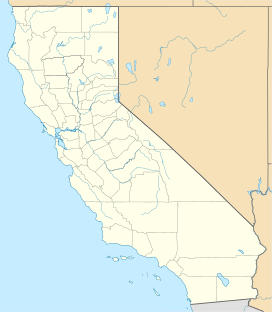McKinley Grove facts for kids
Quick facts for kids McKinley Grove |
|
|---|---|

McKinley Grove
|
|
| Map | |
| Geography | |
| Location | Fresno County, California, United States |
| Coordinates | 37°01′N 119°06′W / 37.017°N 119.100°W |
| Elevation | 6,316 ft (1,925 m) |
| Ecology | |
| Dominant tree species | Sequoiadendron giganteum |
McKinley Grove is a special place in California. It is home to many giant sequoia trees. These are some of the biggest trees on Earth! The grove is found in the Sierra National Forest. It sits in a small, bowl-shaped area high up in the mountains. This area is about 12 km (7.5 mi) southeast of Dinkey Creek.
This grove has between 150 and 200 very large giant sequoia trees. While some parts were logged in the 1980s, the main area of the grove is still untouched. You can walk on a short paved path here. This path takes you through about 20 giant sequoias. The ground beneath them is open and has beautiful dogwood trees. You can also see a very large fallen giant sequoia tree.
Contents
Discover the History of McKinley Grove
This amazing grove has had a few different names over time.
Original Names of the Grove
The grove was first called "Washington Grove." This name honored George Washington. He was the very first president of the United States. Later, it was named Dusy Grove. This name came from a local settler who lived in the area.
How it Became McKinley Grove
Finally, the grove was named after the 25th president of the United States. His name was William McKinley. This is how it got its current name, McKinley Grove.
About Giant Sequoias
Giant sequoias are truly incredible trees. They are the largest trees in the world by volume. This means they have the most wood in their trunks. They can live for thousands of years. Some are over 3,000 years old!
Where Giant Sequoias Grow
Giant sequoias only grow naturally in a small area of California. They need specific conditions to thrive. This includes the right elevation and plenty of moisture. McKinley Grove is one of these special places.
What Makes Them Special
These trees have thick, reddish-brown bark. This bark helps protect them from forest fires. Their cones are small, but they hold many tiny seeds. When fires happen, the heat can help release these seeds. This allows new trees to grow.


